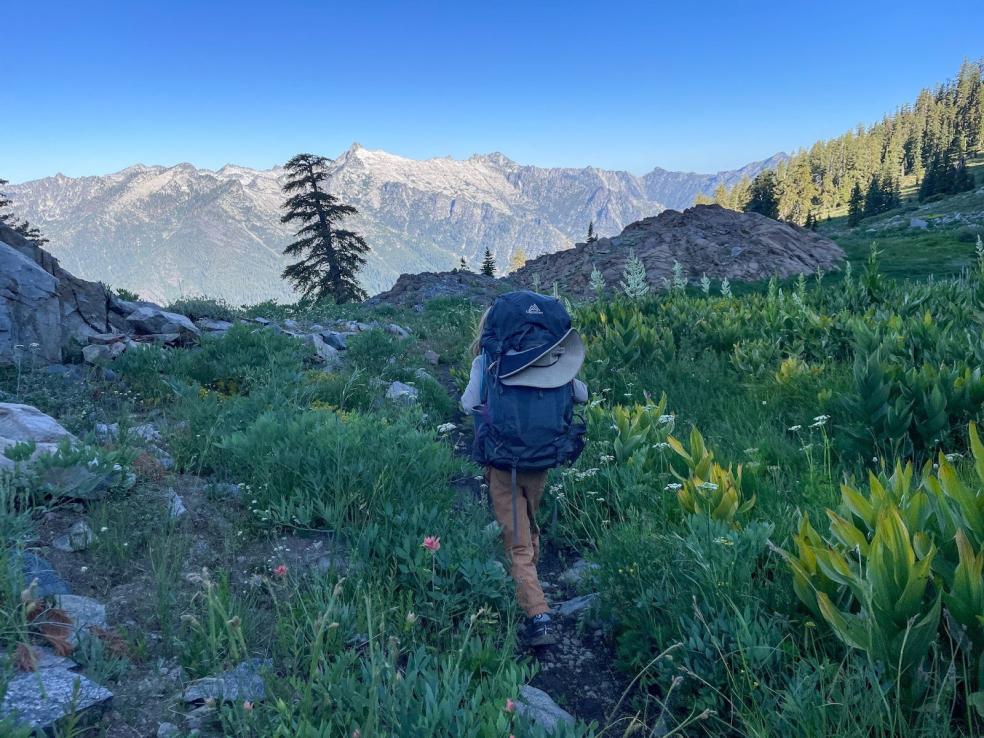
The research team includes Lucy Kerhoulas (Forestry, Fire, & Rangeland Management), Rosemary Sherriff (Geography, Environment, & Spatial Analysis), Erik Jules (Biological Sciences), Michael Kauffmann (Bigfoot Trail Alliance), and the California Native Plant Society.
Humboldt students and faculty are collaborating on an ambitious project to create a vegetation map of the Klamath Mountains to better understand vegetation regeneration in the aftermath of fires and how plant communities are being affected by drying and warming climates. The data collected will also contribute to broader regional knowledge on climate change.
“This grant enhances our study by supporting master's theses, botanical specimen additions to the Cal Poly Herbarium, and the development of a vegetation database archiving survey data throughout Northern California from over 40 years ago,” says Forestry Professor Lucy Kerhoulas (‘06, Botany, ‘08, MS Biological Sciences).
Specifically, the $1.1 million grant will support several components, including 500 vegetation surveys focused on sensitive, diverse, and high-elevation communities, in addition to the existing 1,600 surveys that were already planned for the earlier phase of this project. Robin Bencie, collections manager at the University’s Vascular Plant Herbarium, will oversee voucher specimen accession, and four undergraduate students will be hired to assist with the herbarium work over the next two academic years.
Additionally, the grant will also support scanning and entering data from at least 3,000 EcoPlots from the Klamath, Shasta-Trinity, Six Rivers, and Mendocino National Forests, data that the U.S. Forest Service originally collected in the 1980s and 1990s. These data will provide baseline information about vegetation, allowing researchers to evaluate how vegetation has shifted over recent decades in response to climate change and fire regimes. The EcoPlot database will support up to eight undergraduate students over the next two years.
The grant will also support three master's theses. The first thesis will revisit 144 plots in the Russian Wilderness, a wilderness area of 12,000 acres located approximately 65 miles northeast of Eureka within the Klamath National Forest in Siskiyou County; these plots were originally surveyed in 1969 by John Sawyer and Dale Thornburgh, Humboldt Biology and Forestry Professors, respectively. The new surveys will allow researchers to evaluate shifts in understory vegetation across the last 55 years in response to climate change and fire exclusion.
The second thesis will revisit 75 EcoPlots in the Klamath National Forest that were originally surveyed in the 1980s and 1990s, again in 2018, and now in 2024, evaluating the effects of no fire, one fire, and two successive fires on vegetation communities.
The third thesis will focus on high-elevation five-needle pines, resurveying plots surveyed in 2014 by the U.S. Forest Service to evaluate the effects of climate change and pathogens on white pine population demographics.
The grant will also include a Youth Corps component, with students from rural K-12 schools coming out into the field to be exposed to field biology and collecting vegetation samples that will be used as part of this project. Experiences like these will offer college and career experiences that inspire the next generation of botanists and ecologists.